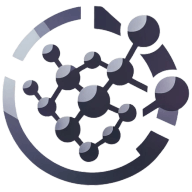How Nanotechnology is Creating More Efficient Water Purification Systems: 7 Examples
Discover the cutting-edge advancements in water purification as leading experts unveil the transformative power of nanotechnology. This insightful article explores groundbreaking solutions that are revolutionizing the accessibility and efficiency of clean water. Dive into the expert analysis on how nanoscale innovations are shaping the future of water treatment.
- Nanotech Harnesses Sunlight for Clean Water
- Portable Nanofiltration Transforms Water Access
- Nanoparticles Enhance Filtration Efficiency
- Nano-Coatings Extend Membrane Lifespan
- Precision Pollutant Removal with Nanomaterials
- Energy-Efficient Purification Through Nanotechnology
- Nano-Sensors Revolutionize Water Quality Monitoring
Nanotech Harnesses Sunlight for Clean Water
Nanotechnology is revolutionizing the way we tackle water purification, making the process not only more efficient but also more environmentally friendly. For instance, researchers have developed nano-sized titanium dioxide particles that, when exposed to sunlight, act as powerful catalysts to break down pollutants in water. This method, often referred to as photocatalytic water purification, leverages the natural power of the sun, thus reducing the need for chemical treatments that are harmful to the environment.
The potential benefits of nanotechnology in water purification are vast and impactful. Firstly, these systems can greatly enhance water quality by removing even the smallest contaminants, including viruses and bacteria, which conventional systems might miss. This is particularly crucial in developing countries where access to clean water can literally mean the difference between life and death. Additionally, because many nanotech solutions rely on renewable energy sources like the sun, they are more sustainable and cost-effective over the long term. Such advancements promise not only to improve health by providing cleaner water but also to help in conserving the environment by reducing chemical waste. By embracing these innovative technologies, future generations can look forward to a healthier planet with access to safe, clean water.

Portable Nanofiltration Transforms Water Access
One example I've seen that's making a big difference is the use of nanofiltration membranes in water treatment. These membranes have pores so small they can filter out salts, heavy metals, and even some organic pollutants. I remember a conversation I had with Elmo Taddeo—he was working with a nonprofit exploring portable water filters for remote areas. They tested nanofiltration membranes to recycle greywater and found them far more effective than traditional systems, especially when water sources were inconsistent or heavily contaminated.
The potential benefits are impressive. These systems can clean water faster and more thoroughly, while using less energy. Nanomaterials like silver nanoparticles can disinfect water by killing bacteria and viruses on contact. Carbon nanotubes and metal oxides can pull toxins right out of the water stream. In places with limited infrastructure, that can mean the difference between having safe drinking water or not. I've seen small teams deploy these technologies in disaster zones and get results quickly.
If your organization is considering clean water projects, I'd suggest exploring point-of-use nanotech systems. They're compact, affordable, and easy to maintain. They also don't require much training to operate. In our line of work at Tech Advisors, we often guide teams through technology decisions like this—especially when there's overlap between IT and sustainability goals. Clean, safe water is a tech issue now too, and nanotechnology is a smart place to start.
Nanoparticles Enhance Filtration Efficiency
Nanoparticles are revolutionizing water purification by greatly improving filtration efficiency. These tiny particles can trap and remove contaminants that traditional filters might miss. The increased surface area of nanoparticles allows for more effective capture of pollutants, resulting in cleaner water. This technology has the potential to provide safe drinking water to millions of people worldwide who currently lack access.
As research continues, even more effective nanoparticle-based filters are being developed. It's crucial to support and invest in this promising technology to ensure clean water for all. Consider learning more about nanotechnology in water purification and advocating for its implementation in your community.
Nano-Coatings Extend Membrane Lifespan
Nano-coatings are transforming the durability and lifespan of water purification membranes. These ultra-thin layers protect membranes from damage and fouling, allowing them to function effectively for longer periods. The extended lifespan of these coated membranes reduces the need for frequent replacements, cutting down on waste and operational costs.
This innovation is particularly beneficial for large-scale water treatment plants and remote areas where maintenance can be challenging. The improved efficiency of nano-coated membranes also means less energy is required for water purification. To support this advancement, consider advocating for the adoption of nano-coated membranes in your local water treatment facilities.
Precision Pollutant Removal with Nanomaterials
Nanomaterials are enabling unprecedented precision in targeting and removing specific pollutants from water. These advanced materials can be designed to attract and neutralize particular contaminants, such as heavy metals or organic compounds. This targeted approach results in more thorough purification, ensuring that even trace amounts of harmful substances are removed.
The ability to selectively remove contaminants also means that beneficial minerals can be left in the water, maintaining its natural balance. This technology has far-reaching implications for both industrial wastewater treatment and drinking water purification. To contribute to this progress, consider supporting research initiatives focused on developing new nanomaterials for water purification.
Energy-Efficient Purification Through Nanotechnology
Nanotechnology is significantly reducing the energy requirements of water purification processes. Nano-enhanced systems can operate more efficiently, requiring less power to achieve the same or better results than traditional methods. This reduction in energy consumption not only lowers operational costs but also decreases the carbon footprint of water treatment plants.
The improved energy efficiency makes sustainable water purification more feasible in areas with limited access to power. As these technologies continue to develop, they could play a crucial role in addressing both water scarcity and energy conservation. To support this progress, consider advocating for the implementation of energy-efficient nanotechnology in water treatment facilities in your area.
Nano-Sensors Revolutionize Water Quality Monitoring
Nano-sensors are revolutionizing water quality monitoring by enabling real-time, highly accurate detection of contaminants. These tiny sensors can detect even trace amounts of pollutants, allowing for immediate response to water quality issues. The ability to continuously monitor water quality helps prevent contamination events and ensures consistent water safety.
This technology is particularly valuable in urban areas where water quality can change rapidly due to various factors. The data collected by these sensors can also help improve overall water management strategies. To promote better water quality in your community, consider advocating for the implementation of nano-sensor technology in local water monitoring systems.


